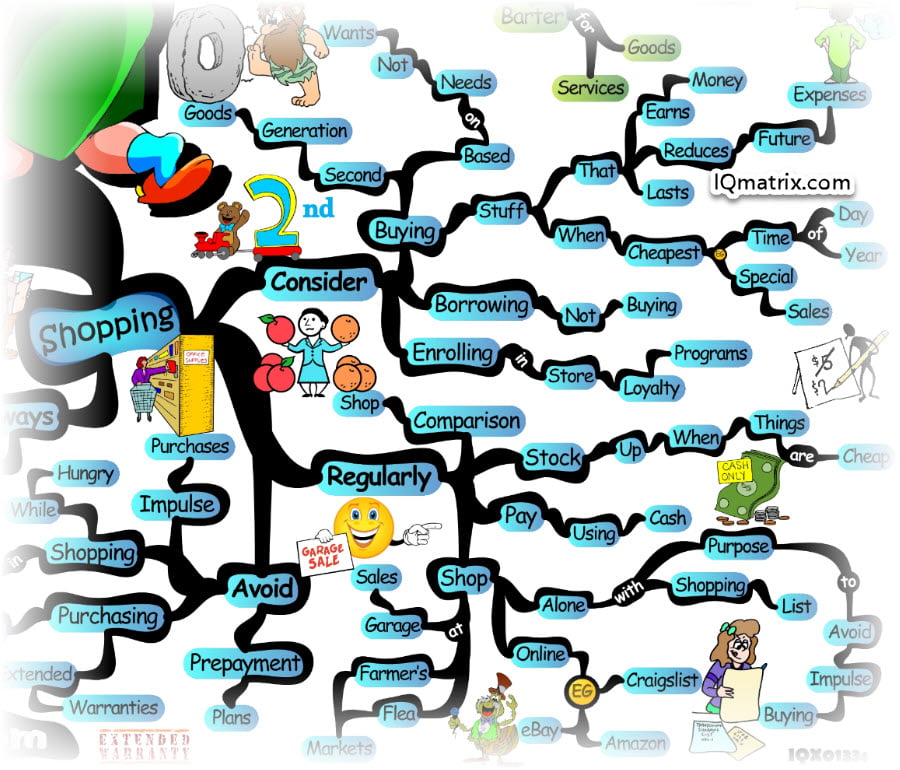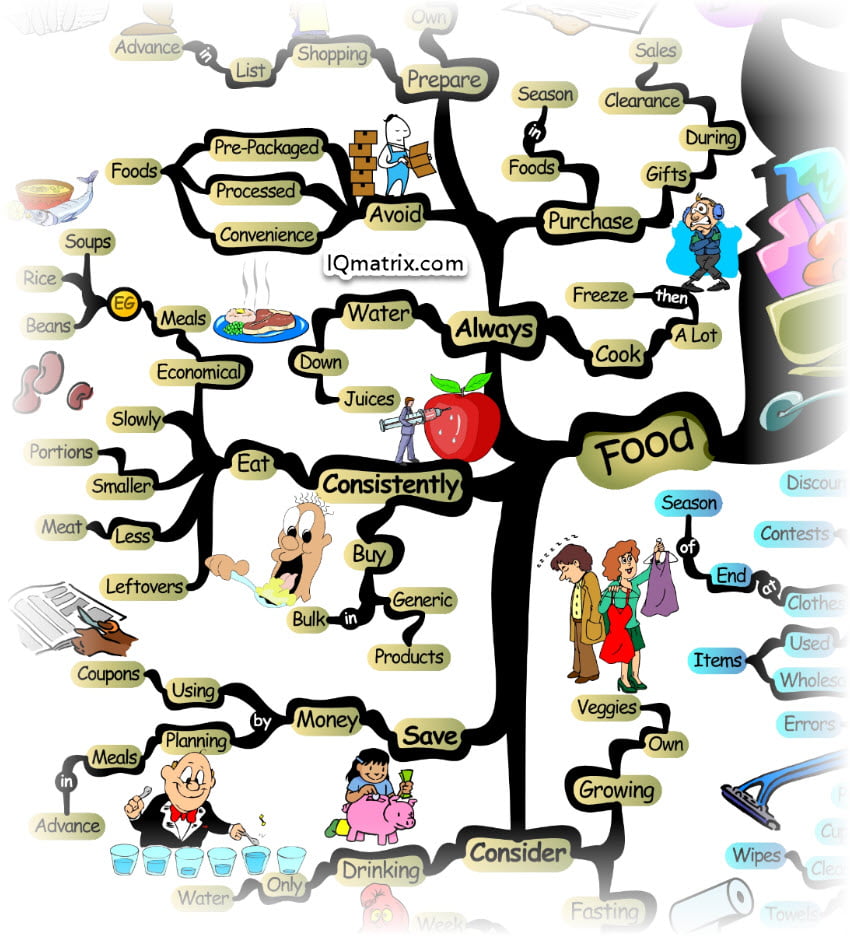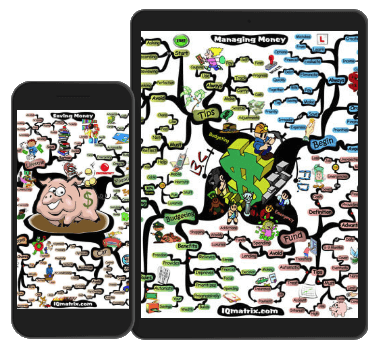Beware of little expenses; a small leak will sink a great ship. – Benjamin Franklin
This article is part of a series of five articles that will help you to make more effective and sound financial decisions. Here is a list of all articles within this series:
- A Common Sense Guide for Getting Out of Financial Debt
- A Practical Guide for Saving Money
- Ideas to Help You Live More Frugally and Save Money
- Common Sense Guidelines for Managing Money
- Simple Guidelines for Building Long-term Wealth
I’m not a financial planner and so there are no investment guidelines and certainly no stock market predictions to be found within these articles. These articles simply present you with common sense practical ideas to help you become more financially savvy.
What does it take to live more frugally?
Living frugally? What in the world does that mean? To live frugally essentially means being economical with your money and living expenses. It means living well below your means and then using the money you save to pay off debts or to invest in building your financial future.
Living frugally, of course, isn’t easy. Often many sacrifices need to be made. We need to give up short-term pleasures and comforts that we have enjoyed and instead choose to make decisions based on building long-term future pleasures. In other words, to live frugally means to sacrifice today in order to enjoy long-term future rewards. I guess all this essentially comes down to the Pain and Pleasure Principle. We need to forgo short-term pleasures and potentially endure short-term pain in order to experience long-term pleasure and subsequently avoid long-term pain.
Having said that, living frugally doesn’t have to mean that you now need to significantly downgrade your lifestyle. What it essentially means is that you now need to work and think harder about how you choose to spend your time and money. It effectively comes down to being a savvy spender, and this, of course, takes effort.
Many people love the idea of living frugally, however not a great many follow through and turn frugal living into a lifestyle. Why is that?
I could, of course, give you plenty of ideas and suggestions on how you can begin living more frugally — and that’s precisely what we will discuss further down this article. However, unless you’re mentally ready and prepared to make these changes, nothing is really ever going to stick long-term. As such, we need to, therefore, begin with the mindset of frugal living that you will need to cultivate before going down this path.
Breaking Down The Frugal Living Mindset
What does it actually take to live frugally? As mentioned above, it takes a lot of work and effort. Unfortunately most people will never put in this work and effort in the long-run and as a result, will fail to make frugal living a part of their lifestyle.
For starters, to be frugal means being proactive. To be proactive means taking control of a situation in order to serve your best interests. However, one must learn how to be proactive in a tactful and sometimes creative way.
Consider for a moment that frugal people love to barter for goods and services. Moreover, they consistently look for bargains and therefore will haggle and try and negotiate better deals wherever possible. This takes work and effort. It also takes time. As such, frugal people must have self-control, determination, and patience.
They need to have the patience to tactfully negotiate better prices, the determination to exhaust all possible options, and the self-control to walk away from a negotiation if they don’t end up getting what they want.
Whether we openly acknowledge it or not, many of us will on more than one occasion probably buy stuff to impress others. And at times, at a conscious level, we may not even be aware of our motives. However, to live frugally means to resist these temptations. Moreover, to live frugally means to avoid getting caught up in the instant gratification trap.
A regular person sees something they like and will immediately be tempted to buy it. Sometimes these items are even on special, and so this person thinks that they are being frugal by making the purchase, however, frugality isn’t just about buying things on special. It’s rather about understanding the difference between a NEED and a WANT.
What you need comes in the form of life essentials that are necessary for survival. What you want comes in the form of luxuries that are designed to make you feel better about yourself. So whether something is on special or not, makes no difference. What is important is whether what you buy is a NEED or a WANT. That is the key to making optimal frugal decisions.
Yes, of course, the frugal person is also tempted by their “wants” just as much as everyone else. However, they have the self-control to resist these temptations, while regular people immediately fall into the instant gratification trap.
Many of us often buy things on impulse. We see something we like and we get so emotionally absorbed that we make an irrational decision and purchase something we don’t really need. To avoid falling into this trap simply walk away and take 48 hours to make your purchase decision. Typically you will find that after you separate yourself emotionally from the purchase decision, that you will start to think more rationally about this potential expense and therefore put yourself in a position to make a more optimal decision.
This, of course, isn’t always easy. You need to think about things a certain way in order to convince yourself that it may not be a rational purchase after all. For instance, let’s quickly have a look at the thought process a frugal person will typically go through when deciding whether or not to purchase something:
Why do I honestly want to buy this? What are my underlying reasons?
Do I want this for myself or simply to impress another person?
Do I really need this, or do I simply just want it?
Can I potentially wait to buy this at a later time?
If I do buy this, when will I realistically use it?
If this enough of a reason to make this purchase?
Are there better and more cost effective alternatives available to purchase?
Do I have another one like this already, or something similar?
Can I buy a good quality used version for less?
Do I know anyone who already owns one of these that I can borrow?
If I do decide to buy this, can I pay cash?
Where will I realistically put it?
What would my partner say if I bought this?
What will I think about this purchase 12 months from now? Will it be worth it?
These are just some of the questions and thoughts that a frugal person will keep in mind when making a purchase decision. These questions help them to evaluate each purchase separately until they have the necessary clarity of mind to make an optimal purchase decision in this particular situation.
It’s of course not necessary to work through this thinking process in so much depth for very small purchase decisions. Everything must be given its fair share of time depending on the cost and the situation. And it’s of course up to you to prioritize these things and your efforts based on each individual purchase decision.
So now that we have an understanding of the kind of mindset it takes to think frugally, let’s focus the remainder of this article on how to live more frugally day-to-day. We will specifically explore how to live frugally when it comes to shopping, food, and luxuries.
How to Become a Frugal Shopper
Within this section let’s take a look at how to become a frugal shopper. This isn’t so much about food purchases, but rather general purchases that can be classified as both “needs” and “wants”.
Becoming a more frugal shopper will allow you to make more optimal purchase decisions that will save you money that you can then put into savings, investments or paying off your debts.
Now, of course, becoming a frugal shopper will take some sacrifice. You will need to give up certain things that you are used to having in order to save money in the short-run. But that’s after all what frugal shopping is all about. It’s about sacrificing short-term pleasure for long-term gain.
Here is a list of ideas on how to become a more frugal shopper:
- Make your purchases based on NEEDS not WANTS.
- Only purchase second-generation products. This is especially true when it comes to technology and gadgets.
- Make an effort to purchase stuff that will last a long time, that will reduce future expenses, and that may potentially earn you money in the long-run.
- Purchase items that are traditionally discounted during specific times of year to take advantage of specials and sales.
- Consider borrowing something instead of purchasing it in-store.
- Enrol in-store loyalty programs in order to get discounts and rewards.
- Take time to comparison shop between various outlets to gain leverage and negotiate a better price.
- Stock up on certain items when they are available at a heavily discounted price.
- Pay for items using cash. If you don’t have the cash on hand then convince yourself that you simply can’t afford it.
- Shop alone with a shopping list. Only purchase items that are on the shopping list in order to avoid impulse buys.
- Shop online to save and/or compare prices on Craigslist, eBay, Amazon, and others.
- Shop for discount items at garage sales, at farmers and flea markets.
- Avoid signing up for prepaid plans and contracts.
- Avoid purchasing extended warranties. The standard warranty is normally enough.
- Avoid purchasing one-off disposable items such as razors, plates, cups, cleaning wipes, and paper towels. Focus on buying “reusable” items instead.
- Avoid shopping in local convenience stores as their prices are typically much higher than you will get at a major supermarket.
- Avoid shopping while you’re hungry. Solution: Eat before you leave home. 🙂
- Double check your receipts for errors that could potentially save you money.
- Purchase used items or search for wholesale prices.
- Purchase clothes at the end of season sales. In other words, purchase winter items to wear for next winter.
- Enter free contests. If you don’t win, then that’s okay, but if you do win it’s a bonus. 🙂
- Always ask for cash discounts. Not all stores provide them, but you may be surprised how often you will get a discount when you ask.
As you can see frugal shopping takes quite a bit of work. It takes more effort than the normal person is typically willing to give. That, of course, puts you at an advantage. What others aren’t willing to do improves your odds of succeeding.
It’s however important to keep in mind that time is always a factor and must be taken into consideration. Travelling 2 hours across town to purchase something that will save you $15 may sound like a good deal, but consider the amount of time you spend getting there and back. You could have worked those two hours and earned more money than you saved. Moreover, the cost of transportation is also a factor, which takes away from the discount you received.
In another example, imagine you got home and found out that you were overcharged $5 on your receipt. Going back to recoup those $5 might take 1 hour of your time and money on transport costs. Dealing with this situation in a frugal way might mean making peace with this oversight and moving on.
All these factors are important to keep in mind when making day-to-day frugal choices and decisions. Always think about the time and the money involved. Likewise, consider the opportunity cost of making one decision over another. Only in this way will you get into the habit of making optimal frugal decisions moving forward.
How to Frugally Manage Food Purchases
In this section let’s shift our attention to day-to-day food expenses and how we can think more frugally about the purchases we make and how we manage the food we eat.
Food is obviously something that falls under the NEED category of expenses — at least most of the time. 😉 It’s, therefore, an unavoidable expense that we need for survival. As such it’s easy to convince ourselves that every food item we buy is a NEED, however, this is often far from reality.
Many of the foods you probably buy today are not “needs”, they are rather “wants” that you have convinced yourself that you NEED. So for starters, we must reclassify what is a necessary expense and what is a luxury expense when it comes to food items.
Here is a list of guidelines to help you become a more frugal and savvy food shopper:
- Consistently buy generic products and make bulk purchases to save money.
- Plan your meals in advance so that you can potentially stock up on items.
- Save money by using coupon codes that you can collect in-store or online.
- If you have a garden and the time, then consider growing your own veggies.
- Consider fasting for one or two days per week. Fasting for 24 to 48 hours or intermittent fasting where you only eat one meal per day has been found to have tremendous health benefits.
- Avoid cordials, sodas, and other flavored drinks and choose to drink water instead.
- If you can’t resist purchasing juices, then dilute them with water to make the juices last longer.
- Meat often costs more than other foods. Choosing to eat less meat will save you a considerable amount of money over the course of a year.
- Don’t throw out the leftovers. Put them in the fridge and turn them into a meal the very next day.
- Choose to eat slowly and chew your food thoroughly. This improves digestion and you end up eating less as it takes approximately 20 minutes for “fullness signals” to transmit from your stomach to your brain. You, therefore, end up eating up to the point to where you feel satisfied, rather than feeling stuffed with food.
- Eat smaller portions of food throughout the day.
- Spend time making home-cooked meals. If you cook too much, then freeze the food and make a meal of it another day.
- Likewise, prepare your own lunches in advance to save money on takeouts.
- Focus on cooking economical meals that come in the form of soups, rice, and beans.
- Only purchase foods that are in season.
- Avoid pre-packaged, processed and convenience foods. These foods typically have a lower nutritional value and also cost more than fresh foods (per serving) simply because they are convenience items.
There are plenty of great ideas here to help you become more frugal with your food expenses and eating habits. However, it can get a little overwhelming at the start. You may need a period of adjustment. I would, therefore, suggest starting small. Pick 2 or 3 things you will put into action over the next week and then just focus on those things. Over time you can add more items from this list until you become a fully fledged frugal food savvy shopper. 🙂
Don’t Overextend Yourself on Luxury Purchases
In this final section let’s discuss luxury purchases. These purchases purely fall into the category of “wants”. In other words, it’s great to have all these things, and they certainly do add a great deal of happiness and comfort to your life, but are they really necessary?
Having said that, there is of course at times a fine-line when it comes to some luxury purchases. For instance, a mobile phone could be considered a luxury, right? However, in another context, it could also be a necessity. Your internet connection could also fall under the same category. It can be classified as a necessity or luxury. It just depends on what you use it for and what purpose it serves in your life.
Because we are living in the technological age, it’s probably fair to say that a lot of the things that we considered as being luxuries 15 to 20 years ago have become necessities today. They are of course not necessities such as the food on your plate, but lesser needs nonetheless.
The downside to having access to these luxuries is that they can cost a small fortune. As such, it’s important to find ways to cut costs wherever possible. One way to do this is to bundle all your services together to save money. For instance bundle your mobile, home phone, internet, and cable onto one bill under one provider. That way you can save a bit of money on these kinds of things. Or maybe you don’t even need a home phone. Just maybe a mobile is the only necessity.
There are however other luxuries that typically don’t have such blurry lines. For instance, those fancy haircuts, that trip to the salon, the day spa weekends, and those weekly massages are no doubt luxuries that you could really do without.
We all enjoy pampering ourselves from time-to-time. All these things provide us with short-term pleasure. However, if they are costing you an-arm-and-a-leg over the course of a year; hurting your savings plan, or worse, getting you further into debt, then maybe it’s time to consider alternatives.
For instance, pamper yourself at home in the tub, or ask your partner to give you a massage. As you can see, you don’t necessarily need to give up these things, however, you can certainly save some money by thinking more frugally and by changing things up a little.
Another luxury that many people like to indulge in is the designer wardrobe. Designer clothing is relatively expensive. Yes, there are exceptions, however, in general, you can probably purchase three regular outfits for the same amount of money it will cost you to purchase one designer outfit. Yes, the outfits might not look as good, but if you are committed to frugal living, then this is a sacrifice you would typically make.
Frugal people typically live very minimalistic lifestyles. They first spend money on what is needed, after which they might then pursue what they want. But of course, for them, it’s about getting what they want in the most frugal way possible. And that can, of course, come down to buying second-hand goods, borrowing things, creating homemade items, and/or modifying what they already have in order to get what they want.
For instance, typically a frugal person will not hold any ongoing subscriptions to a magazine, however, they might still enjoy the pleasure of reading this magazine at their local library. Possibly they may not even have an internet subscription service either, however, they still use the internet at their local community center, for free.
Concluding Thoughts
Yes, frugal living is all about making sacrifices, however, the sacrifices you make don’t necessarily need to be so dire.
Frugal living is all about making the most of what you have in any given situation. You can still enjoy life’s greatest pleasures and comforts, however, you just experience them in a slightly different way to regular people.
You prioritize saving money and paying off your debts over the little pleasures that most people typically take for granted anyways.
Frugal living is all about not tying yourself down into making burdensome purchase decisions that weigh heavily on your hip pocket.
Yes, it takes sacrifice and certainly a shift in how we make purchase decisions, however, in the end, it’s about making optimal choices that will help secure your financial future. And adopting a frugal lifestyle can certainly help put you in a position where that becomes a reality.
Time to Assimilate these Concepts
Did you gain value from this article? Is it important that you know and understand this topic? Would you like to optimize how you think about this topic? Would you like a method for applying these ideas to your life?
If you answered yes to any of these questions, then I’m confident you will gain tremendous value from using the accompanying IQ Matrix for coaching or self-coaching purposes. This mind map provides you with a quick visual overview of the article you just read. The branches, interlinking ideas, and images model how the brain thinks and processes information. It’s kind of like implanting a thought into your brain – an upgrade of sorts that optimizes how you think about these concepts and ideas. 🙂
Recommended IQ Matrix Bundles
If you’re intrigued by the idea of using mind maps for self-improvement then I would like to invite you to become an IQ Matrix Member.
If you’re new to mind mapping or just want to check things out, then register for the Free 12 Month Membership Program. There you will gain access to over 90 mind maps, visual tools, and resources valued at over $500.
If, on the other hand, you want access to an ever-growing library of 100s of visual tools and resources, then check out our Premium Membership Packages. These packages provide you with the ultimate visual reference library for all your personal development needs.
Gain More Knowledge…
Here are some additional links and resources that will help you learn more about this topic:
- 5 Frugal Habits of the World’s Richest People @ Entrepreneur
- 5 Millionaires and How they Live a Frugal Life @ Inc.
- 5 Ways to Live Frugally @ Huffington Post
- 6 Rules for Living Frugally @ Time
- 6 Ways for Millennials to Live Frugally @ Huffington Post
- 7 Daily Habits of Highly Frugal People that Everyone Should Follow @ Bustle
- 7 Extremely Wealthy People Who Choose to Live Frugally @ Business Insider
- 10 Celebrities Who Don’t Live as Lavishly as They Could @ The Richest
- 11 Extremely Wealthy Tech Executives Who Choose to Live Frugally @ Business Insider
- 15 Frugal Billionaires Who Live Like Regular People @ Business Insider
- 50 Ways to be More Frugal @ Telegraph
- Embracing Your Inner Cheapskate @ ABC News
- Meet the Queen of Frugal Living @ Daily Mail
- Retirement: 10 Ways to Live Frugally @ USA Today
- The 5 Most Frugal Habits of the World’s Richest People @ Inc.
- Why Many Rich People are Frugal @ Psychology Today









